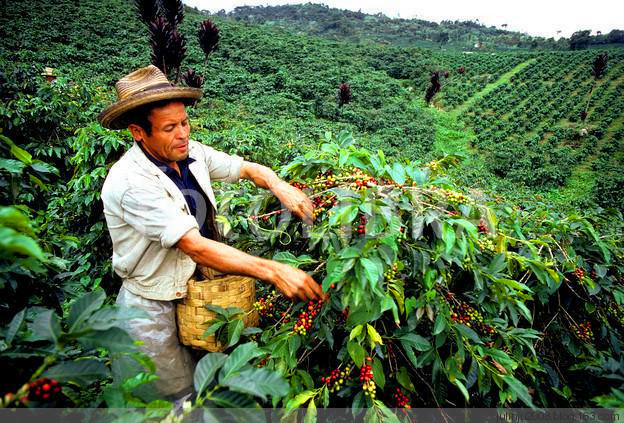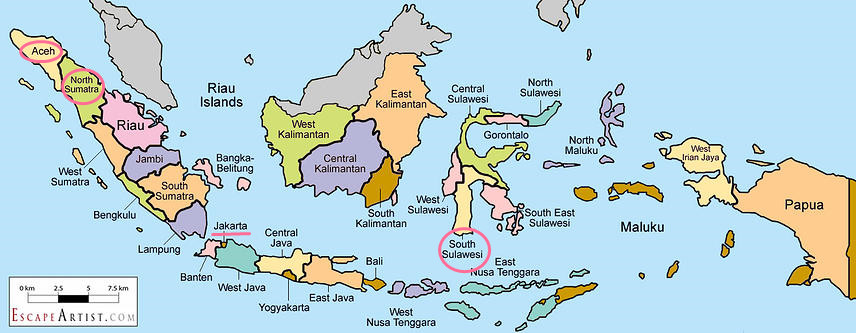Costa Rican coffee varieties of Costa Rican Arabica beans
Costa Rican coffee is full of particles, with ideal acidity and unique aroma. Costa Rica's coffee industry, formerly controlled by the Instituto del Café de Costa Rica (ICAFE), has been taken over by the Official Coffee Council (Oficin del Café). Among coffee exports, those deemed substandard are colored with blue vegetable dye before being recycled for domestic sale. Coffee consumed domestically (dyed blue or undyed) accounts for about 10% of total production, and local coffee consumption per capita is twice that of Italy or the United States.
Costa Rica, which produces one-third of the world's coffee in all grades and varieties, has a place in the global coffee market. Although Costa Rica faces many times more natural disasters than other regions, its arable area is enough to compensate.
There are many kinds of coffee here, but its industrial policy is large and cheap, so there are not many excellent coffee, but it is a good choice to mix other coffees.
One of the most famous is Mountain Costa Coffee, which tastes mellow and neutral. It can be boiled directly or mixed with other kinds of coffee beans. It is also a good choice.
Other types of Brazilian coffee, such as Rio, Parana, etc., can be produced in large quantities without too much care. Although the taste is rough, it is a kind of inexpensive coffee. Due to its distribution in all parts of the country, the solid quality varies, and there are its own standards (NO.2~NO.8 according to the number of impurities, NO.13~NO.19 according to the size of beans, divided into six grades according to taste). Almost all Arabica varieties are of good quality and stable prices, the most famous being Costa Rica, which has been a necessity for blended coffee since ancient times and is familiar to the public.
Excellent Costa Rican coffee is known as "extra hard beans" and can grow at altitudes above 1500 meters. Altitude has always been a problem for coffee growers. The higher the altitude, the better the beans, not only because higher altitudes increase the acidity of the beans and thus enhance the flavor, but also because the lower night temperatures at higher altitudes can slow down the growth of trees and thus enhance the flavor of the beans. In addition, due to the high altitude drop caused by sufficient rainfall, coffee tree growth is very favorable.
Costa Rican coffee is all Arabica beans, washed, it is bright style, full of aroma, clear as wind chimes in the breeze, and mild acid, sweet quite good. Because of the sweet taste, even if the coffee is cold, it is also very good to drink, which is a major feature of Costa Rica coffee. Therefore, it is recommended that you taste Costa Rican coffee with only a small amount of sugar and creamer in order to enjoy its girlish pure flavor.

Important Notice :
前街咖啡 FrontStreet Coffee has moved to new addredd:
FrontStreet Coffee Address: 315,Donghua East Road,GuangZhou
Tel:020 38364473
- Prev

The development history of Costa Rican coffee Costa Rican coffee producing area
Costa Rican coffee is produced in the Republic of Costa Rica (The Republic of Costa Rica) in the south of Central America. Its coffee quality is similar to that of Colombian coffee and is suitable for blending mixed coffee. The coffee beans produced in the high latitudes of Costa Rica are famous in the world, full-bodied, mild in taste, but extremely sour. The coffee beans here are fine.
- Next

Major coffee producing areas in Indonesia-Sumatra Indonesian coffee Sumatra coffee
The main coffee producing area in Indonesia-Sumatra: Sumatra Coffee Sumatra Island, formerly known as Jindao, Jinzhou, is famous for its rich gold deposits. The topography of Sumatra is long and narrow. The topography of Sumatra is mainly from northwest to southeast of the island's Bali Mountains Barisan Mountains and the eastern lowlands. The mountains stretch, with more than 90 volcanoes and many volcanic lakes
Related
- Guji coffee producing area of Guji, Ethiopia: Humbela, Shakiso, Wulaga
- What is the most expensive variety of Qiloso in BOP multi-variety group?
- How to store the coffee beans bought home?
- Why are Yemeni coffee beans so rare now?
- Ethiopian Sidamo all Red Fruit Sun Sun Santa Vini Coffee beans
- SOE is mostly sour? What does it mean? Is it a single bean? what's the difference between it and Italian blending?
- Is Italian coffee beans suitable for making hand-brewed coffee?
- How to choose coffee beans when making cold coffee? What kind of coffee beans are suitable for making cold coffee?
- Just entered the pit to make coffee, what kind of coffee beans should be chosen?
- Can only Japan buy real Blue Mountain Coffee? What are authentic Jamaican Blue Mountain coffee beans?

